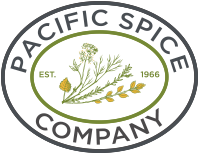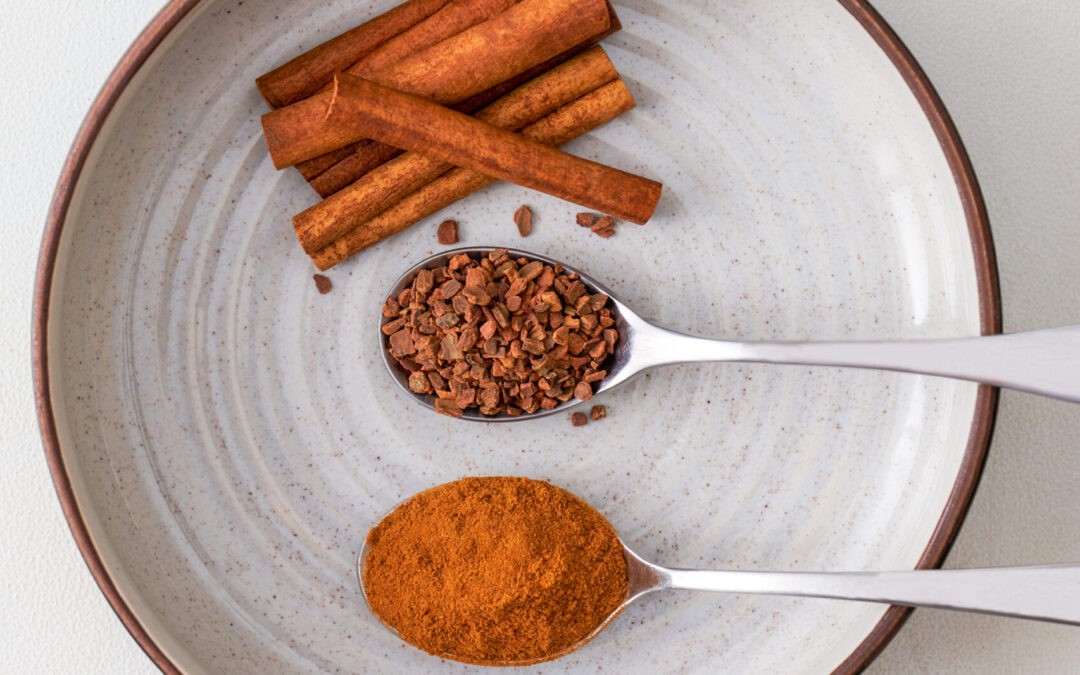Ancient and celebrated throughout history, cinnamon is a highly prized, naturally warming spice that lends its unmistakable flavor to so many culinary favorites around the world.
This potent spice is made from tree bark which comes from several species of genus Cinnamomum trees. It is harvested and ground into the sweet, fragrant spice that is used to flavor everything from cinnamon rolls to meat marinades.
This blog dives into the history, origins, types, and common uses of this sweet and spicy spice..
2 Main Types of Cinnamon
The two main types are cassia and Ceylon cinnamon.
Here’s a quick overview:
- Cassia is grown in China, Indonesia, and Vietnam (Saigon), and is the most common variety of cinnamon on the market.
- Ceylon is known as “true cinnamon”. Ceylon dates back to ancient times and is milder, less common, and is grown in Sri Lanka.
Cassia Cinnamon
Origin: Indonesia, China, Vietnam
Indonesian cassia comes from the mountains of the island of Sumatra, and it makes up most of the product sold in America today. This type is spicy, sweet, and hot, and is the most common variety on the market.
Vietnamese (Saigon) cassia contains the highest oil content on average. Also known as Saigon cinnamon, this variety has a distinctively sweet flavor and a stronger flavor than the Indonesian variety.
Chinese cassia is mainly used in China for medicinal purposes.
Ceylon Cinnamon
Origin: Sri Lanka
Grown in Sri Lanka which used to be called Ceylon, Ceylon cinnamon is believed to be the original variety. Ceylon has a lower volatile oil content, making it milder and sweeter than cassia. Ceylon is typically more expensive than cassia.
Appearance
Cinnamon comes from the dried bark of Cinnamomum evergreen trees. There are many different types of Cinnamomum trees that vary greatly in size, bark color, flavor, and aroma, depending on where the tree is natively grown.
The bark of a Cinnamomum tree is harvested by cutting strips of bark from the trunk and the branches. These curls are known as cinnamon sticks.
In this blog, we will discuss two main types of cinnamon, cassia and Ceylon, as well as Saigon (the Vietnamese variety of cassia).
Each type and variety differs slightly in appearance.
- Cassia: In its stick form, you can differentiate cassia by its darker, rigid, single layer coil.
- Saigon: This variety of cassia is dark reddish brown in color, and typically the darkest of these three varieties.
- Ceylon: In its stick form, you can differentiate Ceylon quills by their many, lighter colored, paper-thin layers.
Flavor
Cinnamon is a naturally warming spice that is strong, sweet, woody, spicy, and slightly citrusy. Like many other spices, it is valued based on its levels of essential oil. A higher content of essential oil means a more potent product with a stronger flavor and aroma.
Here are some basic flavor notes of each of the main three varieties:
- Cassia: Sweet, spicy, and hot
- Saigon: Sweet and strong
- Ceylon: Sweet and mild
History
Since its discovery, cinnamon has been used around the world as a culinary spice, a medicine, and even as an embalming agent in ancient Egypt.
Over time, this potent spice garnered attention for its versatility in natural medicine. It is used medicinally for a number of believed benefits which range from heart health to improving metabolism, reducing inflammation, and boosting immunity.
This celebrated spice has been revered throughout human history across cultures and is believed to be one of the first traded spices in the ancient world. For many years, it was a highly prized commodity and was considered as valuable as gold.
Origins/Quality Sourcing
- Cassia is sourced from Indonesia, China, and Vietnam.
- Ceylon is sourced from Sri Lanka
At Pacific Spice, we are dedicated to sourcing the highest quality spices and herbs. Our cinnamon products are sourced from reputable, approved sources to ensure that they are a flavorful and dependable addition to your favorite dishes.
Storing
In accordance with best practices for spice storage, make sure your herb and spice products are tightly sealed and stored in a cool, dry, dark place; above ground and away from the wall.
When they are stored properly, our ground products can stay fresh for up to one year. Whole cinnamon sticks are able to hold onto their flavor and aroma for even longer.
Contact your Pacific Spice sales rep if you have any questions about proper spice storage.
Uses
Cinnamon has a bright and potent flavor that enhances both savory and sweet dishes. This versatile and beloved spice is a key ingredient in dishes around the world, and there are an infinite number of ways to experiment with it in the kitchen.
During the cold winter months, this naturally warming spice is hard at work, flavoring favorite holiday dishes, from stuffing, to hot apple cider, and even meat marinades. Cinnamon is a favorite among bakers, and is the perfect addition to baked goods like muffins, bread, and pumpkin pie. You can also mix it into warm drinks, or sprinkle it over berries, fruit, yogurt, cereal, nuts, toast, and even sweet potatoes for a dash of natural sweetness and warmth.
PSC CINNAMON
At Pacific Spice, we sell the highest quality products:
- PSC Ground Cinnamon
- PSC Cinnamon Sticks
Contact us with any questions or to request a sample!

